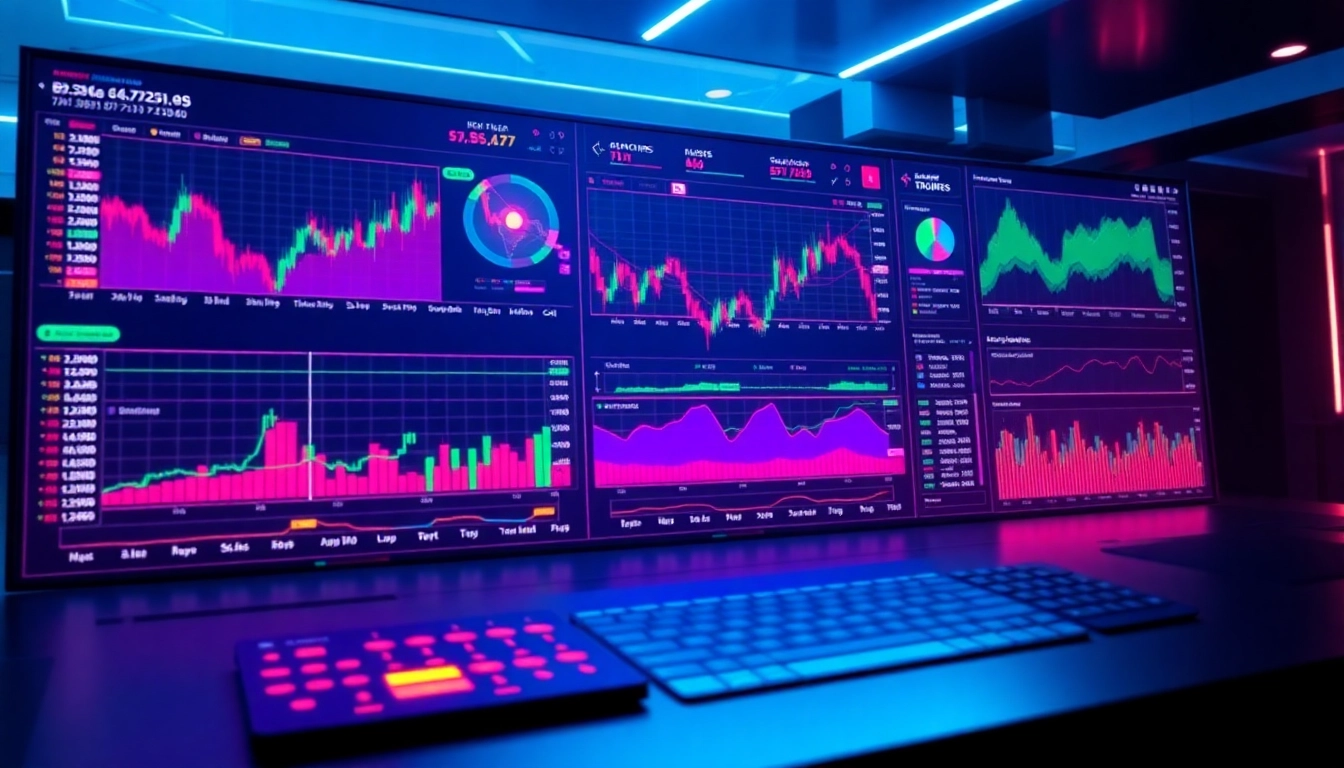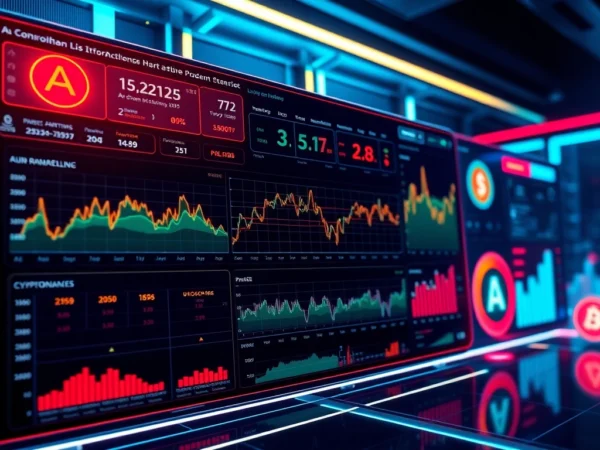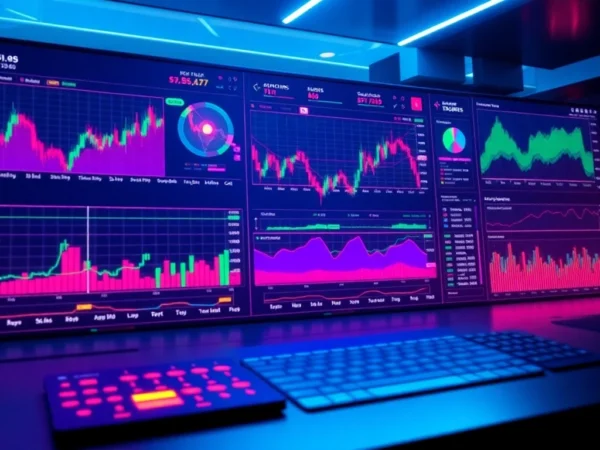Mastering Trading View: Advanced Strategies to Maximize Market Insights
Understanding Trading View: Features and Benefits
In the fast-paced world of trading and investing, having access to precise, real-time market data is essential for success. trading view has emerged as a leading platform that consolidates market analysis, charting tools, and social trading features into a seamless experience. Its comprehensive suite of tools empowers traders, investors, and analysts to make informed decisions, whether they are analyzing stocks, cryptocurrencies, forex, or commodities. This article explores the core features, advantages, and practical use cases of TradingView, providing you with actionable insights to maximize its potential in your trading strategy.
Overview of Trading View’s Core Tools
Advanced Charting and Technical Analysis
At the heart of TradingView lies its sophisticated charting software, renowned for its user-friendly interface combined with advanced analytical capabilities. Traders can access a wide variety of chart types—candlestick, line, bar, and Renko charts—to visualize market behavior effectively. The platform supports hundreds of technical indicators, from classic moving averages to complex oscillators and volume indicators, enabling users to identify trends, reversals, and breakout points. Customizable drawing tools, trend lines, Fibonacci retracements, and pattern recognition further enhance analytical precision.
Real-Time Data and Market Coverage
TradingView aggregates real-time data streams from global exchanges, ensuring traders operate with the most current market information. It covers a broad spectrum of assets, including stocks, cryptocurrencies, forex pairs, commodities, and indices. This extensive data coverage allows for comprehensive market monitoring within a single platform, saving time and reducing the need for multiple data sources. Additionally, users can customize market watchlists to track specific securities and set alerts to be notified of price movements or indicator signals instantly.
Social Trading and Community Integration
A unique aspect of TradingView is its vibrant social network component. Traders can publish their ideas, strategies, and analyses, fostering a collaborative environment. Community members can comment, share insights, and learn from each other’s experiences, making the platform an educational and interactive hub. This social aspect encourages transparency, peer validation, and the discovery of novel trading techniques, which are invaluable for both beginners and seasoned professionals.
Benefits of Using Trading View for Traders
Enhanced Decision-Making with Visual Data
Visual representation of market data simplifies complex information, enabling quicker and more accurate decision-making. TradingView’s intuitive charting tools allow traders to spot patterns and divergence signals that might be missed with raw data alone. Visual cues like color-coded indicators, overlays, and annotations help traders contextualize their strategies in real-time.
Accessibility and Cross-Platform Compatibility
Whether you prefer desktop, mobile, or web-based platforms, TradingView offers consistent functionality across devices. Its cloud-based architecture ensures seamless synchronization of watchlists, charts, and settings, so traders can switch between devices without losing context. This accessibility is crucial for active traders who need up-to-the-minute updates on the go.
Community Insights and Crowdsourced Ideas
Leveraging the collective intelligence of the community can provide fresh perspectives and reduce analysis fatigue. Popular ideas and technical setups shared by experienced traders often serve as a starting point for individual analysis, making TradingView a valuable educational tool. Furthermore, embedded social features facilitate mentorship, discussion, and validation, which are critical for refining trading strategies.
Cost-Effective and Customizable
TradingView offers a tiered subscription model, from free to premium plans, accommodating various levels of professional trading needs. The free version provides extensive features sufficient for casual traders, while paid plans unlock additional indicators, enhanced alerts, and priority customer support. Customization options allow users to tailor the workspace according to their trading style and asset focus.
Setting Up and Navigating Trading View Effectively
Creating and Managing Watchlists
Efficient watchlist management is crucial for monitoring multiple assets simultaneously. Users can create personalized watchlists by searching for specific symbols—stocks, crypto pairs, indices—and adding them with a single click. Organizing watchlists into categories (e.g., tech stocks, cryptocurrencies) simplifies navigation during volatile trading sessions. Alerts can be set at specific price points or indicator signals, ensuring timely notifications without constant monitoring.
Using Technical Analysis and Indicators
The platform’s indicator library is extensive, including popular tools like RSI, MACD, Bollinger Bands, and Ichimoku Cloud. Users can combine multiple indicators to generate robust trading signals. The drag-and-drop interface allows for quick customization, and the ability to save indicator templates accelerates repetitive analysis. Combining technical data with chart patterns such as head and shoulders or flag formations enhances predictive accuracy.
Saving and Sharing Trading Ideas
TradingView’s social features enable traders to document and share their analyses with the community. Ideas can include annotated charts, commentary, and strategy explanations, which can be publicly shared or kept private. Sharing insights fosters feedback and constructive critique, accelerating skill development. Additionally, saving templates and chart setups allows traders to build a reusable library of analysis workflows.
Advanced Trading View Techniques
Implementing Automated Alerts and Notifications
Automated alerts are vital for responding swiftly to market movements. TradingView allows users to set multi-condition alerts based on price levels, indicator thresholds, or custom scripts using Pine Script—TradingView’s proprietary scripting language. Alerts can be received via email, SMS, or app notifications, minimizing missed opportunities during high-volatility periods.
Integrating Trading View with Trading Platforms
Many traders expand TradingView’s utility by integrating it with brokerage accounts and trading platforms via API connections or third-party apps. This integration allows for one-click order execution directly from charts, streamlining the trading process. Moreover, TradingView supports proprietary broker integrations that facilitate seamless trading workflows, reducing latency and execution errors.
Utilizing Community Ideas and Social Trading Features
Engaging actively with community ideas provides insights into market sentiment and emerging trends. Traders can follow prolific analysts, participate in discussions, and even create custom streams of market commentary. This collaboration fosters continuous learning and sharpens analytical skills, making TradingView not just a tool but a collaborative environment for ongoing education.
Optimizing Performance and Enhancing Your Trading Strategy
Analyzing Market Data with Trading View Charts
Deep market analysis involves layering multiple indicators, patterns, and timeframes. TradingView’s multi-chart layouts enable comparing different assets or timeframes side by side. By dissecting trends across multiple settings, traders refine their entries, exits, and risk management plans, increasing profitability over time.
Backtesting Strategies Using Historical Data
Backtesting is crucial for validating trading strategies. TradingView allows users to apply their indicators and rules to historical data, visualizing hypothetical performance. This process highlights potential weaknesses and optimizes parameters before deploying strategies in live markets. Sensitivity analysis through different settings helps identify robust setups that work across varying market conditions.
Measuring Success and Refining Techniques
Data-driven trading involves regularly reviewing performance metrics such as win rate, risk-reward ratio, and drawdown levels. TradingView’s exporting and reporting features facilitate detailed analysis of trade history. Continuous refinement, based on quantitative feedback, ensures that trading strategies adapt to evolving market environments, maintaining a competitive edge.
Future Trends and Innovations in Trading View
Emerging Technologies and Features
Looking ahead, TradingView is expected to incorporate more predictive analytics, AI-driven recommendations, and enhanced automation tools. The integration of machine learning algorithms could assist in identifying patterns and forecasting market movements with higher accuracy, making the platform even more indispensable.
API and Developer Integrations
APIs will likely become more accessible, allowing developers to create custom plugins, data feeds, and trading bots. Such integrations will expand TradingView’s ecosystem, providing tailored solutions for institutional traders, algo developers, and financial educators.
Staying Ahead in the Evolving Trading Landscape
As markets grow more complex and technologically driven, staying updated on platform features and market innovations is vital. Participating in TradingView’s webinars, beta testing new tools, and engaging with the community can help traders leverage the latest advancements for a competitive advantage.









